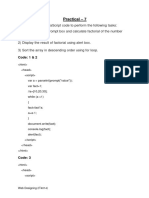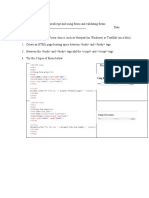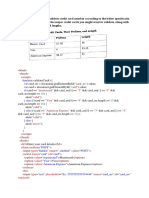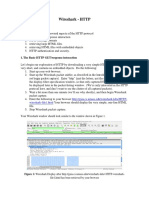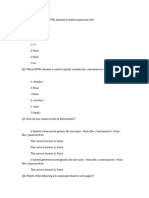0% found this document useful (0 votes)
12 views14 pagesPrep Codes
The document provides an overview of HTML table elements, lists, and JavaScript functionalities for creating interactive web applications. It includes examples of ordered and unordered lists, description lists, and JavaScript code for finding the greatest of three numbers, a simple calculator, and form validation. Each section contains code snippets and explanations to illustrate the concepts effectively.
Uploaded by
Hari KarthikCopyright
© © All Rights Reserved
We take content rights seriously. If you suspect this is your content, claim it here.
Available Formats
Download as DOCX, PDF, TXT or read online on Scribd
0% found this document useful (0 votes)
12 views14 pagesPrep Codes
The document provides an overview of HTML table elements, lists, and JavaScript functionalities for creating interactive web applications. It includes examples of ordered and unordered lists, description lists, and JavaScript code for finding the greatest of three numbers, a simple calculator, and form validation. Each section contains code snippets and explanations to illustrate the concepts effectively.
Uploaded by
Hari KarthikCopyright
© © All Rights Reserved
We take content rights seriously. If you suspect this is your content, claim it here.
Available Formats
Download as DOCX, PDF, TXT or read online on Scribd
/ 14














